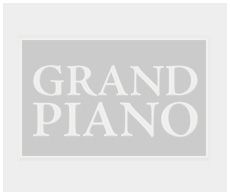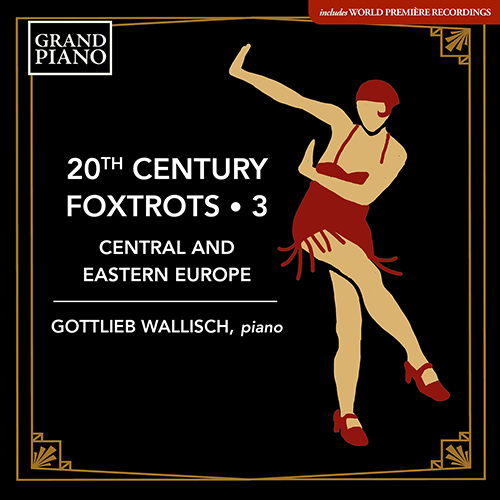
Yevgeny Mravinsky (1903 - 1988)
Evgeny Mravinsky was born into an aristocratic and musical family in St Petersburg. His forebears were unusually strong-willed: one aunt, the soprano Evgeniya Mravina, a soloist at the Maryinsky Theatre and much admired by Tchaikovsky for her interpretation of Tatyana in his opera Eugene Onegin, had rejected the advances of the Tsar; and another aunt, Alexandra Kollontai, was the first woman to act as a fully-fledged Russian ambassador. When Evgeny was six years old he began taking piano lessons and made his first visit to the Maryinsky Theatre, to see Tchaikovsky’s ballet The Sleeping Beauty, which had received its first performance there in 1890. While a pupil at school he participated in theatrical productions and when he was at university, studying biology, he worked as an extra at the Maryinsky Theatre.
By now Mravinsky’s interest in music was serious and he began to prepare himself to enter the Leningrad Conservatory of Music. However, following the Revolution of 1917, as a result of which he and his mother had been evicted from their home by the Red Guard after the death of his father, restrictions had been placed on former members of the aristocracy studying: consequently his aunt Alexandra wrote directly to Alexander Glazunov, asking the distinguished composer to take on Evgeny as a composition pupil. He also worked during this period as a rehearsal pianist for the Leningrad Ballet School and for the Leningrad Academic Opera and Ballet Theatre, the post-revolutionary name for the Maryinsky Theatre. (This was to be later changed to the Kirov, named after the Bolshevik leader who was appointed as head of the Communist party in Leningrad in 1926 and who was later assassinated by Stalin in 1934.)
On the strength of several unusually mature works, Mravinsky entered the composition department of the Leningrad Conservatory, graduating as a member of Vladimir Scherbachov’s composition class in 1930, the year in which he first conducted at the Conservatory. He had been drawn to the possibility of conducting some years earlier, after hearing a performance of Wagner’s Siegfried conducted by Emil Cooper, and had already received instruction from Nikolai Malko who was chief conductor of the Leningrad Philharmonic Orchestra until 1929. Mravinsky continued at the Conservatory as a student in Alexander Gauk’s conducting class, from which he graduated in 1931. He was immediately taken on as an assistant conductor with the Leningrad Academic Opera and Ballet Theatre and was promoted to the position of conductor with the company shortly afterwards in 1932, carrying on in this role until 1938 and conducting predominantly ballet. In addition he regularly conducted the Leningrad Philharmonic Orchestra from 1934, having first appeared with the orchestra in 1931.
Mravinsky rose to national prominence in 1937, when he conducted the first performance of Shostakovich’s Symphony No. 5. Following the composer’s official condemnation by the state in 1936, the success or failure of this première would be significant, given also that Stalin’s purges were by now gaining momentum. Mravinsky delivered a powerful and successful account of the new work, which subsequently became a core item in his repertoire. Thirty years later he recalled this breakthrough in his career: ‘I still wonder just how I dared to take up such a complicated thing without a moment’s hesitation. If it happened now I would certainly rack my brains, making lots of second guesses and I’m not sure I would take it up…I had my whole reputation at stake and, even more importantly, also that of a new composition no one had ever heard in public before…My only excuse was my young age, and that I was unaware of the problems that awaited me down the road, and the responsibility I was taking…’ This success also led to a close working relationship with Dmitri Shostakovich: Mravinsky was to conduct the first performances of several more of his symphonies. The next critical stage in his career was his participation in the first All-Union Conductors’ Competition, which was held in Moscow in 1938. This identified the major future leaders of Soviet music: Mravinsky took the first prize and the other prizewinners were Konstantin Ivanov, Kirill Kondrashin and Nathan Rakhlin. Shortly afterwards Mravinsky was appointed chief conductor of the Leningrad Philharmonic Orchestra, a position which he held henceforth until his death in 1988. He gave his last concert on 6 March 1987.
Mravinsky’s long tenure, lasting almost half a century, of the chief conductorship of the Leningrad Philharmonic Orchestra is comparable with only two other such long-term relationships: Willem Mengelberg with the Amsterdam Concertgebouw Orchestra, and Ernest Ansermet with the Suisse Romande Orchestra. He viewed conducting in highly ethical terms. To quote his widow, the flautist Alexandra Vavilina, Mravinsky ‘…had been brought up to display the highest degree of artistic responsibility and looked upon conducting as a calling. Whenever he studied a score, he sought to enter into the atmosphere of a composition and to penetrate the composer’s spiritual world, for he felt that his overriding task was to bring that world back to life…’ At the same time, and allied to this philosophy, he used the extraordinary degree of power which his position and the Soviet state gave to him to prepare his orchestra exhaustively for performance. The highest degree of orchestral precision was achieved through almost fanatical levels of rehearsal: intensive sectional rehearsals were followed by numerous rehearsals with full orchestra prior to the actual performance. If Mravinsky felt that a performance might not reach his personal standards, he would have little hesitation in cancelling it. As a result both he and the orchestra achieved standards of instrumental virtuosity and musical nuance that completely disarmed any possible criticism. It is arguable that the conditions which Mravinsky enjoyed with the Leningrad Philharmonic Orchestra are unlikely ever to be replicated, at least in the foreseeable future, and that therefore his performances with the orchestra, and the recordings of these, reflect an extraordinary convergence of most unusual circumstances. Apart from recordings made during the 1940s and 1950s with orchestras based in Moscow, isolated appearances with the Czech Philharmonic Orchestra, and a handful of foreign tours, Mravinsky stuck to one orchestra, one city, and one concert hall.
Disliking the recording process, Mravinsky ceased to make studio recordings after 1961, and up to his death his publicly-available recordings were relatively few. Given this fact and his limited international appearances, it is perhaps doubly extraordinary that his international fame was so extensive: he was regarded throughout the last decades of his life as a master with a reputation of the highest order. In addition he surrounded himself with only the best: his deputies included Kurt Sanderling and Arvid Jansons, and his students Valery Gergiev and Mariss Jansons. As the filmed recordings of him conducting clearly demonstrate, Mravinsky was highly economical as a conductor: his gestures were clear without at any time being extravagant. Similarly his interpretations were finely balanced and quite without rhetorical excess, even if at times they reached an unparalleled intensity of expression, a stylistic trait aptly described by Mariss Jansons as ‘romantic classicism’.
Mravinsky’s commercial discography has been enhanced in the years since his death by a considerable number of recordings of concert performances given both in Leningrad and on tour. The number of concert recordings is far greater and includes a wider repertoire. Several of these recordings were issued by the state record company of the USSR, Melodya, while many others have been issued on a variety of labels. Virtually all of his recordings were made with the Leningrad Philharmonic Orchestra. Mravinsky eloquently expressed his philosophy of music and of performance thus: ‘Is it possible to live without music? It does not appear to be among man’s primary needs. But to go without it is to forgo happiness. I put my faith in the transcendental power of music. One day, immersed in music, I was stirred to the very depths of my being. It was like a stroke of lightning or a thunderclap. Art must affect people in this way, for if it doesn’t, it isn’t art. To sear art and music into the minds of the people—audiences and performers—that is my principal concern, my ultimate aim.’
© Naxos Rights International Ltd. — David Patmore (A–Z of Conductors, Naxos 8.558087–90).


 Grand Piano has gained a reputation for producing high quality recordings of rare keyboard gems. Dedicated to the exploration of undiscovered piano repertoire, the label specialises in complete cycles of piano works by many lesser-known composers, whose output might otherwise have remained unknown and unrecorded.
Grand Piano has gained a reputation for producing high quality recordings of rare keyboard gems. Dedicated to the exploration of undiscovered piano repertoire, the label specialises in complete cycles of piano works by many lesser-known composers, whose output might otherwise have remained unknown and unrecorded.






